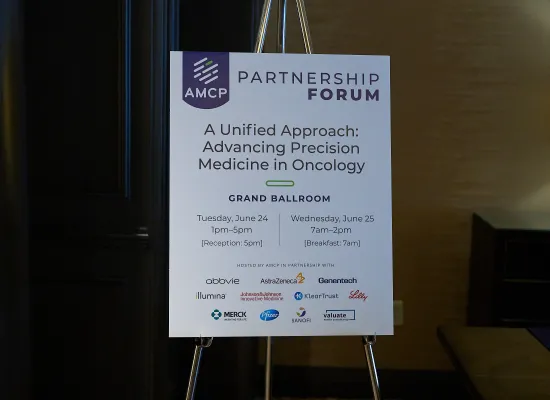
Cantrell Addresses AMCP Nexus 2018 General Session
It is a great honor to welcome everyone to Orlando and AMCP Nexus 2018. This large gathering is a testament to the vitality of our profession and the strength of AMCP.
It’s also a reflection of this pivotal moment in our country’s history.
We are just days away from one of the most consequential midterm elections we have seen in decades. And no matter your political leanings, there is no denying that health care — and specifically the costs of pharmaceuticals — is a top issue for voters and politicians alike.
According to a recent poll by West Health Institute and the University of Chicago, 77 percent of Americans regard drug costs as “unreasonable.” And 88 percent believe lowering medication costs should be a top priority for political candidates. Concerns over rising costs are backed up by CMS, which projects that spending on prescription drugs will grow 6.3% annually, from $338 billion last year to $605 billion in 2026.
This situation is being addressed on many fronts.
Since we last met, the White House released its blueprint to lower drug prices and reduce out-of-pocket expenses. And Congress has moved forward with legislation that aims to drive down costs and provide greater transparency in health care. Meanwhile, some of the biggest players in our sector have merged to stay competitive in this new environment.
So where does AMCP stand at this crucial juncture? How are we addressing the challenges, and preparing for the “next generation of care.” There is a reason this is the theme of our conference.
I can tell you we are not standing idly by. AMCP is tackling the cost challenges — and others —head on. We have become a recognized leader in:
- Advocating new payment models that reward value over volume, and free up resources for new innovative medications.
- Generating real-world evidence to support decision making through our Biologics and Biosimilars Collective Intelligence Consortium.
- Creating solutions that will allow manufacturers and payers to proactively share information in advance of products coming to market.
And, we’re also developing new ways to assess value from a patient perspective, including through patient-reported outcomes, and focusing on total cost-of-care by breaking down barriers to integrate medical and pharmacy data.
What does this all add up to? I can tell you AMCP is on the forefront of helping develop a financially sustainable health care system that both recognizes the need to manage scarce resources and provides patients access to needed medications.
That’s the charge of everyone in this room. And I know we will be successful…because managed care pharmacy principles work! We see it all around us:
We see it in the in the hundreds of millions of people every day who fill prescriptions at affordable costs.
We see it in the growth of Medicaid managed care and Medicare Advantage. Today, more than half of all Medicaid beneficiaries receive most or all of their care from managed care organizations, a statistic that would have been unheard of just a few short years ago.
And we see it in the success of the Medicare Part D program, which was signed into law 15 years ago this year. That program has been highly successful due in large part to the principles of managed care pharmacy.
Our success is rooted in sound science and real-world evidence. But we can’t rest on our laurels. We must continually look to the future and address the challenges that lie ahead.
Which brings me to the contributions of the AMCP Foundation. The Foundation looks to advance the quality and affordability of health care through the application of medication-related research and education.
The Foundation yesterday unveiled the latest iteration of its influential Emerging Trends research at its Annual Research Symposium. This one focused on disruptors and opportunities in health care. This is the kind of research that will help AMCP, managed care pharmacy, and the country achieve the goal of creating a financially sustainable health care system.
In conclusion, it can’t be emphasized enough that while we touch the lives of millions, behind those numbers are real individuals — mothers, fathers, children, grandparents, friends, Aunt Millie.
Featured News & Resources
See Full CalendarAMCP eLearning Day: Nexus Encore
AMCP 2026 Registration Opens
Upcoming Events
AMCP offers a wide variety of educational opportunities, from events and webinars to online training.







